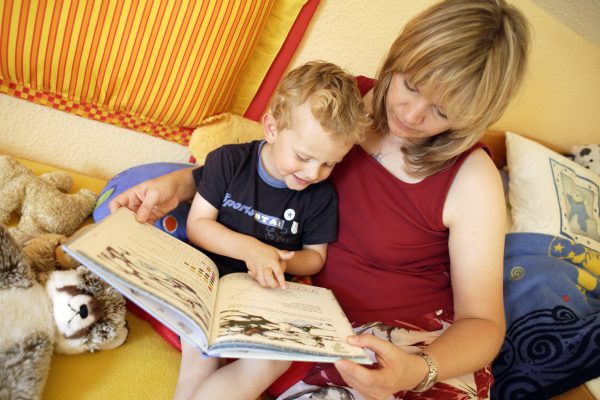The first two years of a child’s life are characterized by the development of perception and discovery of the environment. Of course, media are also part of this environment. Babies first perceive them in the same way as other objects. Little by little, they recognize the medial in these things, for example, by mom or dad looking at a picture book with them.

© photothek.net
Young children learn best when they can experience a stimulus on more than one sensory organ at a time. For example, when they are exploring a picture book, it helps your child a lot if they look at the book with you and you talk about it with them. When you name objects, children learn them faster.
From an early age, children want to communicate and express themselves through language. Even very young children prefer complex sounds that resemble speech. Child-friendly music, audio books or singing together with parents help with language development.
Young children can recognize film footage at an early age. However, their attention span is still very short. At about 4 to 5 months, they can focus on moving images of 10 seconds or less. Even if this ability improves quickly, it does not mean that they understand filming and that it helps them learn.
Even in the second year of life, children learn better when they see an action for real. A good rule of thumb is that children should not watch more than 20 minutes of television per day between the ages of two and three. However, the exact time always depends on the particular family and especially the particular child.
The older the children get, the more interesting digital media such as smartphones or tablets become. From a very individual point in time, young children learn how to use smartphones, laptops and televisions from their parents and siblings.
They recognize mom or dad on cell phone pictures and want to look at them over and over again. The output of sounds, music or images on the smartphone becomes more interesting. So young children come into contact with digital content again and again. Contact should then not be generally prohibited by you and, if necessary, the siblings, but it should be reduced to an acceptable level.
It is particularly important that the first contact with media is well dosed, supervised and under constant supervision. Then media can also be very useful to young children.